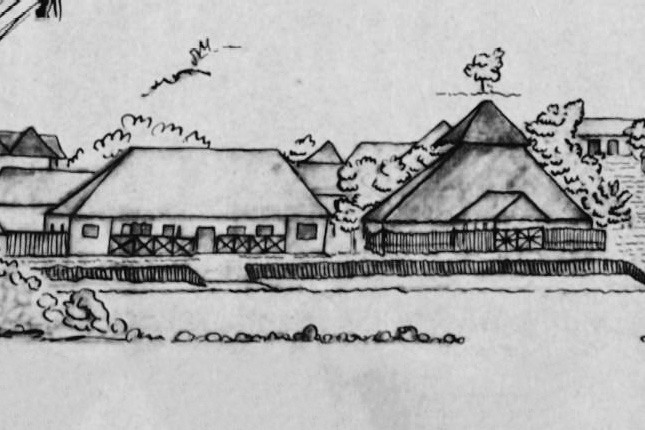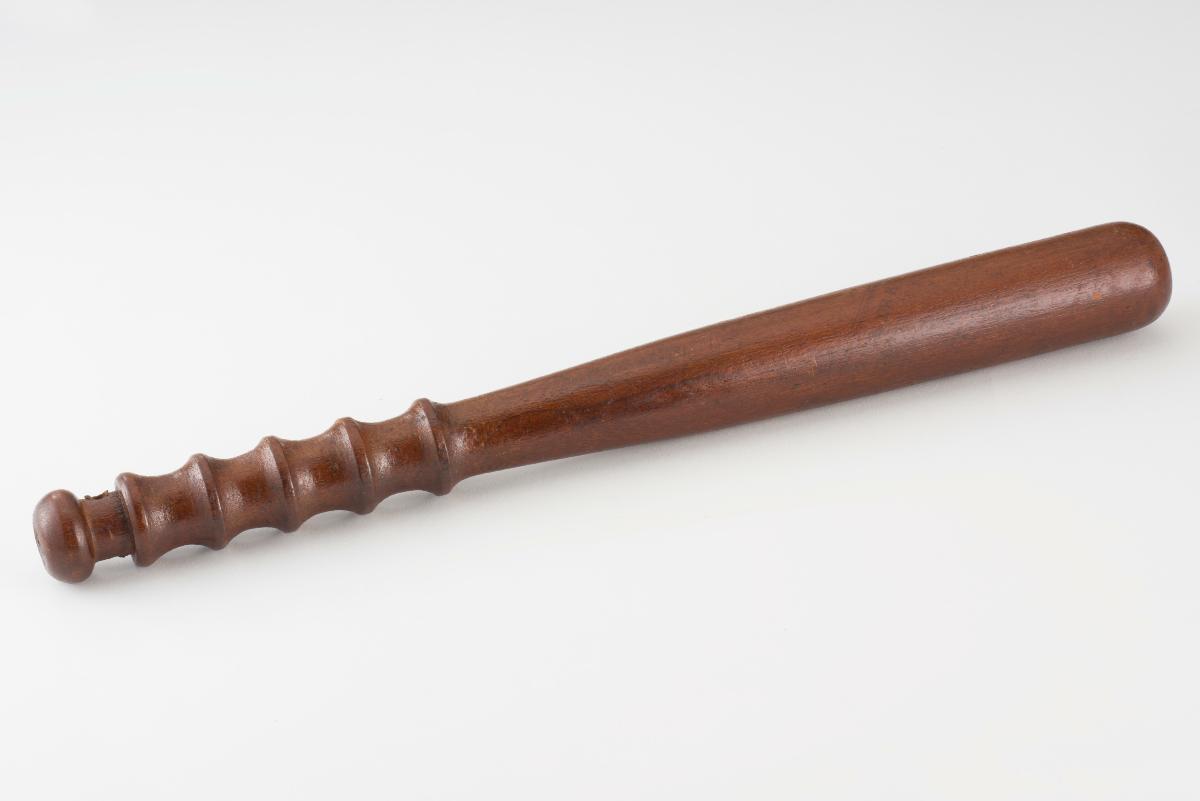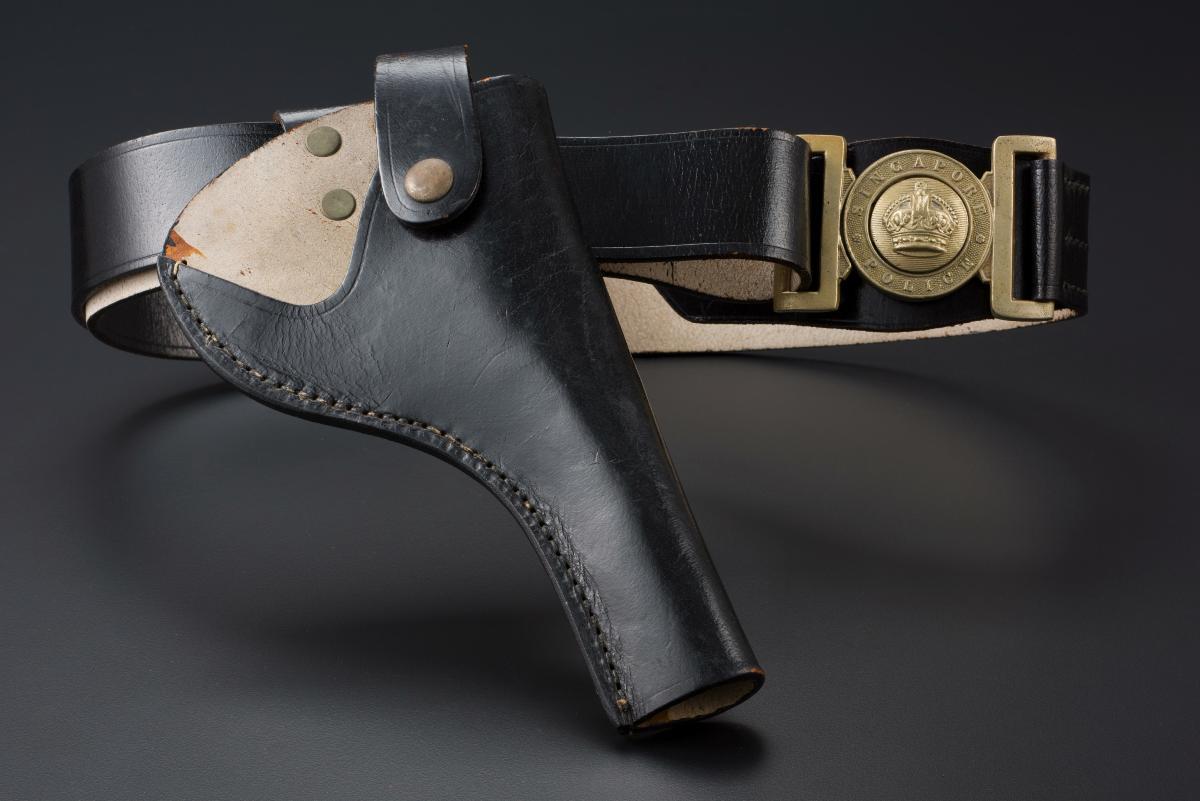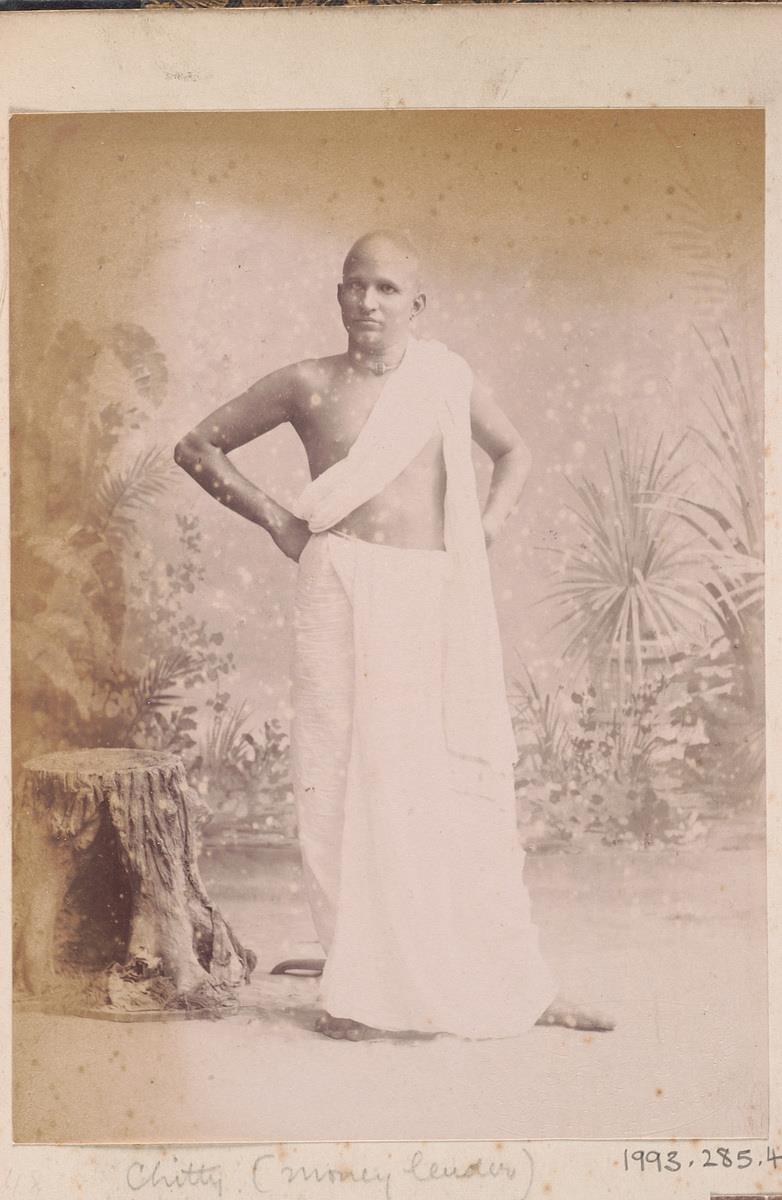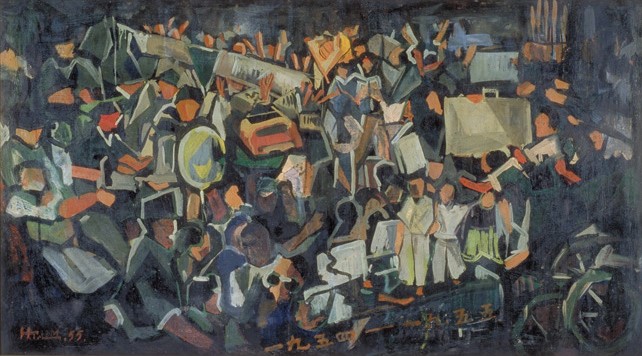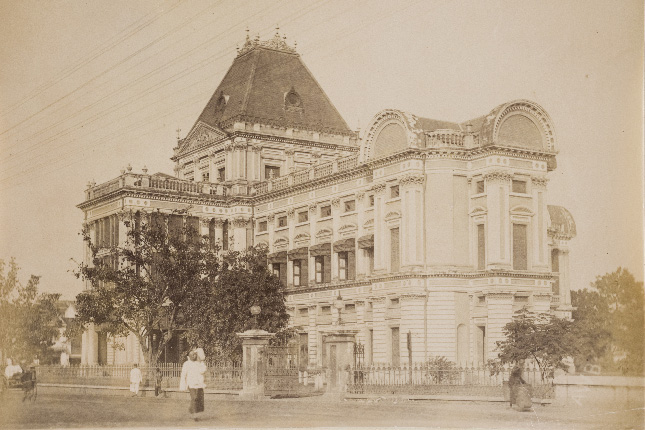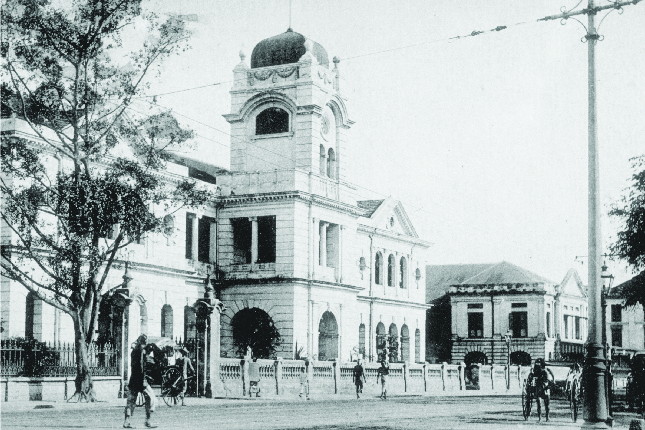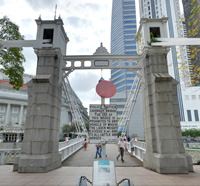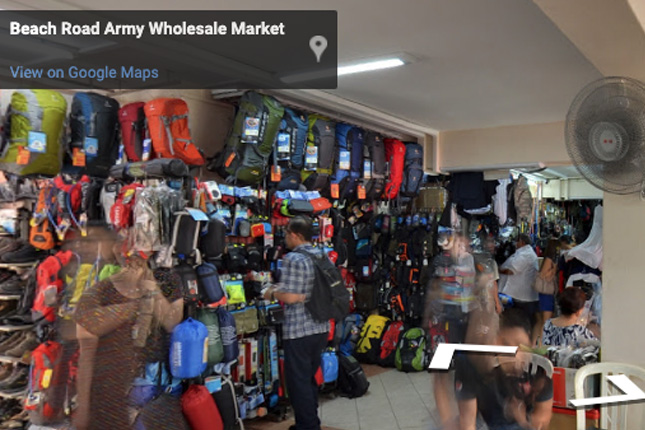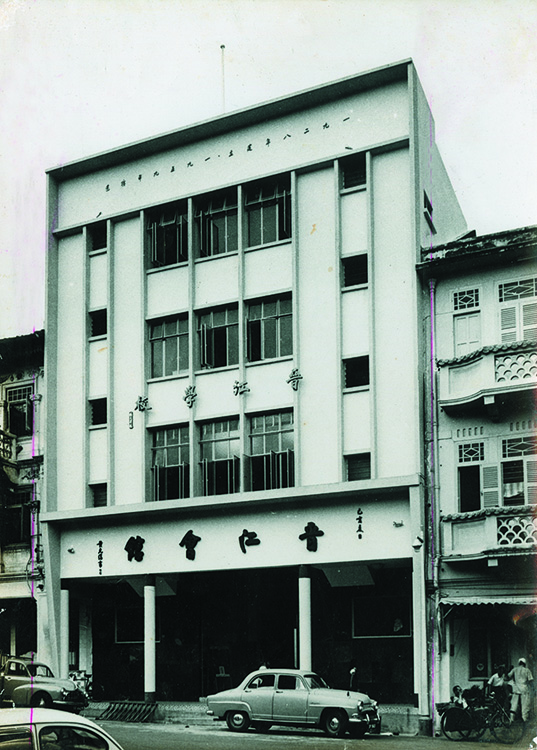First Police Office (Demolished)
The start point of the Police Heritage Trail marker sited here symbolises the humble beginnings of the Force. The first purpose-built Police Office, made of attap, was situated near the Singapore River from December 1820 to 1823. Before this, the 12-man team operated out of the residence of Police Assistant Francis James Bernard - located in front of Victoria Concert Hall. In 1823, a warehouse near the mouth of the Singapore River was repurposed as the second Police Office. The Police Office located by the Singapore River, overlooked the increasingly busy waterways as commerce flourished and immigrant communities settled close to the banks.
However, the thriving free port saw migrants and merchants flocking in droves to the settlement in search of work and fortune. The rapid population growth led to an increase in crime, which was exacerbated by the lack of defined guidelines on when British laws should be applied and when native laws should be respected. The lack of a law enforcement apparatus also meant that justice could not be administered in a prompt and impartial manner. Frequent disputes also occurred between followers of the Sultan and the Temenggong which often resulted in serious injuries and death.
Faced with mounting crimes and a breakdown of law and order, William Farquhar, the first British Resident of Singapore, set up the police force in May 1820. His son-in-law, Francis James Bernard, headed the Force as Police Assistant. Farquhar only received official sanction from Stamford Raffles three months later in August 1820.
The nascent Force in 1820 was a 12-man team consisting of the Police Assistant, writer, jailor, jemadar (sergeant) and eight peada (constables or peons). Without an office, the team operated from the seafront residence of Police Assistant Bernard on the Cantonment Plain in the vicinity of present-day Victoria Theatre and Concert Hall. Being well-versed in the local languages, Bernard’s duties included granting licenses, preserving the peace, settling personal and commercial disputes as well as supervising the jail and its inmates. He chose men from different ethnic groups to manage the disputes of their respective communities.
The first purpose-built Police Office was completed in December 1820. Located by the Singapore River amidst the hive of trading activities, the Police Office was just an attap hut, reflecting the humble beginnings of the Force and how Singapore’s early administrators managed the burgeoning settlement with very limited resources. The first Police Office was also located in close proximity to Farquhar’s residence, present-day National Gallery Singapore (former Supreme Court wing).
In 1823, the Police Office relocated to a stone building, formerly one of an English merchant Captain Methven’s godowns at Ferry Point, close to the lawn in front of the main entrance of present-day Victoria Theatre and Concert Hall. Besides serving as a Police Office, dead bodies were brought to the building for inquests to be conducted by the Coroner. There were also lockups at the basement of this Police Office.
By the early 1840s, the Police Office had moved out from the former godown to a building at the site of present-day Asian Civilisations Museum. The Commissariat and Medical Stores also shared this building, which did not appear to be of sturdy construction. In 1846, six men confined at the Police Office for theft made their escape from the lock-up after removing wooden floor tiles and digging under the wall. In February 1859, the Police Office temporarily occupied a house vacated by Mr. Abraham Solomon, a merchant, in North Bridge Road, the site of present-day Capitol Piazza complex.
In 1861, the Police Office moved into the Central Police Station in South Bridge Road, present-day One George Street, ending an era of the Police Office operating from a separate location.
Early Policing Duties
Up to the 1830s, the police force continued to be inadequately funded and poorly equipped to deal with rampant crimes. Things started looking up in 1857 when a full-time Commissioner of Police was appointed. Besides fighting crime, working with chiefs of native populations to effect law and order, the police also attended to non-policing duties including fire-fighting, the removal of temporary houses on the south side of the Singapore River to allow for the execution of Raffles’ town plan, numbering of streets, settling disputes over minor debts and bore witness to contract of loans and documents concerned with the transfer of lands as many of such transactions were registered at the Police Office.
In The Vicinity 1 - Former Marine Police Headquarters
Part of the Asian Civilisations Museum Green was the site of the former Marine Police (present-day Police Coast Guard) Headquarters. Standing sentinel at the mouth of the Singapore River, the Marine Police Headquarters, also referred to as the Cavenagh Bridge Police Station, was built in 1924. Construction of the Marine Police Headquarters was completed at a cost of $85,000. The building was white and had the striking feature of a broad flight of steps leading straight to the charge room. It also had accommodation for the two inspectors of the Marine Police.
Establishment of Marine PoliceThe Marine Police was established in 1866 to combat petty crimes along the shoreline and the Singapore River. It had a wide range of responsibilities including patrols to deter smugglers with illicit cargo from the Dutch East Indies (present-day Indonesia), preventing cargo theft, preventing fishing in prohibited areas, and even quelling mutinies aboard other ships. The Marine Police was also responsible for ensuring order and security along the busy waterway where cargo and passenger boats plied. By 1935, the Marine Police boasted a personnel strength of 101. Most were locals recruited for their knowledge and experience of the sea.
The Tide of ChangeOver the years, the Marine Police gradually modernised as new boats and equipment like radars were acquired. Its jurisdiction also widened to maintaining law and order within all of Singapore’s territorial waters. In 1970, the Marine Police Headquarters at Cavenagh Bridge was vacated. That was in view of plans in 1972 by then Prime Minister Lee Kuan Yew to clean up the river and stop the Singapore River from being used as a dock. All personnel was shifted to the newly-built Kallang headquarters. In 1972, the Marine Police Headquarters building was demolished.
In The Vicinity 2 - Maria Hertogh Riots (Outside Former Supreme Courts)
On 11 December 1950, the Maria Hertogh riots broke out over a custody battle for a Dutch Eurasian girl raised as a Muslim. The site in front of the Old Supreme Court, present-day National Gallery of Singapore, was where the riots first erupted. One of the first post-war communal riots in Singapore, it brought to the fore the undercurrents of a fragmented multi-racial society. It was also a turning point for the Police Force as it embarked on widespread reforms of its riot handling capabilities.
An Emotional Custody Battle
At the heart of the dispute was a custody battle over 13-year old Maria Hertogh between her Dutch biological parents, who were interned during the Second World War, and a Malay family who had fostered her and raised her as a Muslim.Maria’s custody was granted to her birth parents after her traditional Malay marriage was invalidated by the High Court due to her young age. The court’s decision, which was deemed offensive by the Muslims and sensationalised by radical Muslim activists, led to emotionally charged sentiments that eventually boiled over on 11 December 1950.
Lead-Up to the RiotOn 11 December 1950, around 20 demonstrators gathered outside the Supreme Court. They carried a green Islamic flag and banners calling for the removal of Maria from the convent. Constables formed up across the street but the demonstrators passed through unopposed, taking up positions on the Padang, chanting and shouting slogans.
By noon, the crowd that had grown to between 2,000 and 3,000, surged past the police line to occupy the lawn of the court. A Gurkha riot squad deployed earlier outside Victoria Memorial Hall was called in and it successfully kept order, apart from infrequent throwing of stones at the police.
Unfolding of the RiotThings took a turn for the worse about an hour later when shots were fired by an officer who had been attacked by some demonstrators. The crowd began attacking European spectators. The violent procession then spread to other areas like the Sultan Mosque, Bukit Timah Road and Kampong Java, bringing violence and destruction in its wake. Europeans and Eurasians were dragged from vehicles, attacked, and some were killed. Rioting, arson and looting were rampant.
Order was only restored two days later on 13 December 1950. By then, the riots had left 18 dead, 173 injured. There was also vast damages to public property. On 17 December 1950, the government revealed that 1,168 people had been arrested for committing various violent acts and breaking the curfew, while some 500 had been detained under the Emergency Regulations.
1951 Commission of Inquiry
In 1951, a Commission of Inquiry was set up to investigate the causes of the riots and the government’s weaknesses in restoring law and order. It was an introspective moment for the police which introduced reforms that proved invaluable in the turbulent years ahead.
Multiple factors leading to the escalation of the riots were identified. This included the lack of experience in handling riots, ineffective deployment of Gurkhas, and failure of senior command to act decisively in arresting the ringleaders before things spiralled out of control.
The colonial authorities failed to see that they had a sensitive religious issue on their hands, and not purely a legal one. They had also failed to place Maria in a neutral institution even when tensions arose.
Lastly, the radio control system, implemented just several years earlier in 1945, still in its infancy, was inadequate during large-scale emergencies like the Maria Hertogh riots. It was swamped with messages and there were no arrangements to filter out important messages for communication to senior ranking officers.
Police ReformsIn response to these findings, far-reaching changes were enacted. A Riot Squad comprising officers of different ethnic backgrounds was established in 1951 to be specially trained to handle riots. It was renamed the Reserve Unit in 1952 and is the predecessor of today’s elite Police Tactical Unit in the Special Operations Command.
The racial composition of the general force was also recalibrated to achieve a better balance. In addition, a more efficient communication system featuring a network of 40 radio patrol cars was introduced. These reforms would have lasting effects in strengthening the Force’s capabilities.




